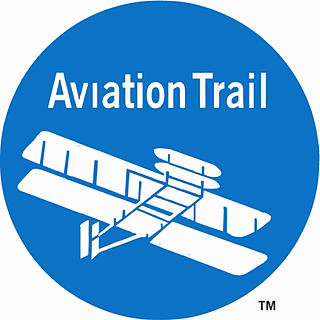June in Aviation History
- Aviation Trail
- Jun 1, 2020
- 3 min read
Updated: Jun 2, 2020
The Wright Exhibition Team at the Speedway:

A 1910 Air Show was one of the first major events at the Indianapolis Motor Speedway. Newly constructed the prior year, the facility had seen limited use in its first year of 1909, with a helium-filled balloon race in June , a day of motorcycle races in August, and an auto race weekend later in August. The auto racing had resulted in five fatalities (one driver, two riding mechanics, and two spectators) due largely to the inadequate stone chip & tar paving of the track. This led to paving the track in bricks in preparation for the 1910 season. After the repaving, for the first full year of operation in 1910, a Memorial Day race meet was held with a 200 mile feature race.
Still a year away from the first running of the Indianapolis 500, the track management had planned for another innovation for 1910. From June 13 through June 18 of 1910 they hosted the first demonstration of airplanes in Indiana, turning the new speedway into an aerodrome, and the site of one of the earliest air shows in the country. They constructed facilities in the infield to house the planes and equipment, along with a monorail for launching the airplanes. Flags were positioned around the track to delineate parameters for timed flying laps.
There were eleven entries for the “The Great Aviation Show of 1910”, six of which were entered by the newly formed Wright Exhibition Team. Orville and Wilbur Wright had not been in favor of an exhibition team, but were eventually convinced of the opportunity to showcase their technology and give a financial boost to the Wright Company. In January of 1910 they began to put together a team with a goal of being ready to participate in the June Indianapolis event. Three of the original team members were from Dayton, Ohio. One was Walter Brookins, whom they had known from when he was four years old. (Walter had also been a student of Katherine Wright in school). Spencer Crane and Clifford Turpin were also from Dayton. Arch Hoxsey, Ralph Johnstone, Frank Coffyn, Philip Parmelee, Al Welsh, and Duval La Chappelle were other team members. Those who flew at the Indianapolis event were Welsh, Coffyn, Hoxsey, Johnstone, La Chappelle, Walter Brookins, plus Orville Wright himself.

Indianapolis-based aviators Joseph Curzon, Mel Marquette, Russell Shaw and George Bumbaugh fielded four of the entries. Brumbaugh’s entry was owned by speedway president Carl Fisher. One monoplane was entered by aviation pioneer and barnstormer Lincoln Beachey. The Wright planes were the only ones to get off the ground successfully during the six days of events.
Orville was the first to fly on the opening day of Monday, June 13. He also took track founder Carl Fisher as a passenger on one flight. But it was 20 year old Walter Brookins, just over a month after his first solo flight, who was the star pilot of the event, with aerobatics and record setting feats. In addition to excelling in the timed laps, he set a new world’s altitude record at 4,384.5 feet on June 13 (bettering a record that was only five months old), and then resetting the record again on June 17 at 4,939 ft. He accumulated 7 hours and 59 minutes of flight time, with his longest flight being 1 hour and 4 minutes. He also won two races against a novel propeller driven “Wind Wagon” car made by the Indianapolis auto manufacturer Overland. (The car’s speed had been clocked at 60 mph).
Several of the six days of the event were held under rainy and windy conditions that limited flying time, but a Wright Flyer had been available for attendees to see up close on the ground, and there was still plenty of impressive flying. Orville closed the event, just as he had opened it, with his own demonstration of flying skills, impressing the spectators. The Wright Exhibition Team had accomplished what they had aimed for. And the Indianapolis Motor Speedway had staked its claim as a legendary proving ground of technology for years to come.
The following year, in 1911, the first Indianapolis 500 was held. But it was not the end of the track’s association with aviation. The U.S. entry into WWI spurred rapid aviation development, and with Indianapolis’ strategic location to military airfields, railroads, and industry, U.S. Army opened an Aviation Repair Depot at the speedway facility in early 1918. It was the location of the 809th, 810th, 811th, and 821st Aero Squadrons, where aircraft and engines were tested, modified, and repaired. The speedway location provided hangars and a test field, making the IMS an aviation hub during WWI.
See these interesting links for more reading, with further links and photos:
Also see: Wright State Archives blog (article by Dawne Dewey in June of 2017) with more photos







Comments